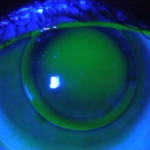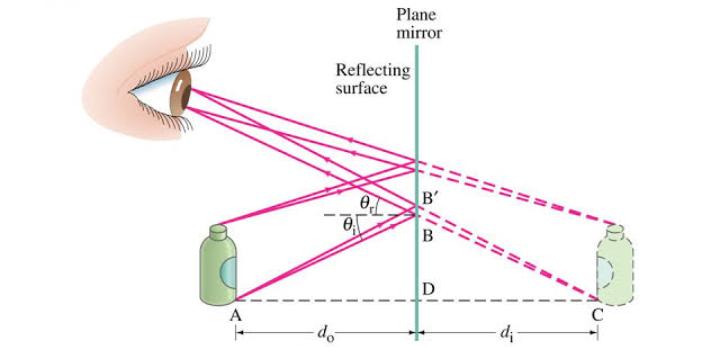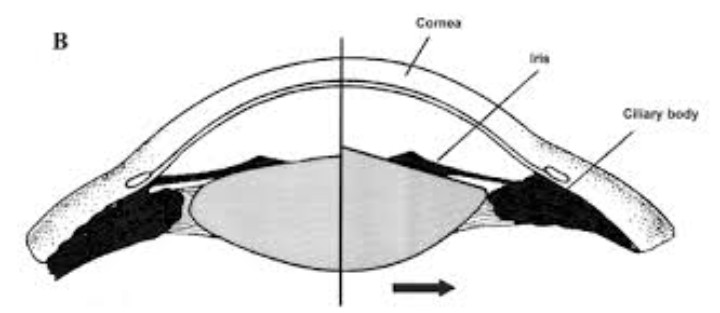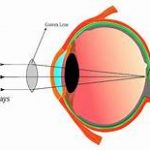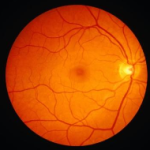Ophthalmometer or so called keratometer is a ophthalmic diagnostic instrument that measuring the curvature of the anterior surface of the cornea it’s an objective method .it was invented by the German physiologist Hermann Von Helmholtz in1851, although an earlier model was developed in 1796 by Jesse Ramsden and Everard Home.
Principle
Keartometer is based on the truth the anterior surface of the cornea work as a convex mirror. The parallel rays coming from infinity that where will be focused it also depend on the corneal curvature and the size of the image formed by the anterior surface of the cornea. This curvature of the cornea can be calculated. The accurate measurement of the image size is obtained by using the principle of visible doubling.
Types of keratometer :
There are two types of keratometer for practice now days
BAUSCH & LOMB MODEL
This instrument works on the principle of constant object size and variable image size for it’s operation. A lamp illumination the mires by means o f a diagonal mirror. Light from the mires strikes patient’s cornea and produces an image behind it. As like cornea acts as a convex mirror a virtual erect image of the mires is formed 4mm behind the cornea. The size of mires of Bausch & Lomb Keratometer is 64 mm and the image size is 3.0 mm. The distance between the cornea and the mires is 75 mm. The mires have a variable separation on the same instrument depending on the radius of curvature of the cornea being tested. Mires of different instruments have a variable separation for the same corneal curvature. On a cornea of 7.94 mm radius, the separation of mires for a Bausch & Lomb keratometer is 3.1 mm. The image is magnified 1.304 times by the objective lens and magnified finally to 6.197 times by the eyepiece.
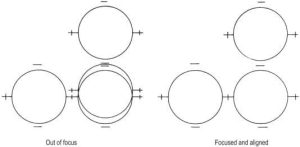
JAVAL & SCHIOTZ MODEL
The working of Javal & Schiotz keratometer is based on variable object size & constant image size. It employs a fixed image doubling device .In this system , the object consists of two mires ,illuminated by lamps enclosed in a housing behind them . The optical system of a Javal & Schiotz ophthalmometer very closely resembles that of a keratometer with few variations. The image of the mires formed by the patients cornea acts as the object for the rest of the optical system of the instruments. The size of the image depends on the radius of the cornea and the size of the original object, i.e., the distance between the two mires. A wallaston type of doubling prism is used to produce the ‘double image ‘.
Procedure of keratometry:
There haven’t nothing so much to operate keratometer or ophthalmometer.
Patients & instrument Management – The patients puts his chin on the rest and head against the head rest. The chin is raised or lowered to bring the line in apposition with the black line on Bausch & Lomb keratometer. The eye which is not being examined is covered till the patient’s pupil and the projecting knob are at the same level. The instrument is moved forwards and backwards till the mires are accurately focused. The dial is then rotated till the mires are approximated. The plus mires should be aligned so that they overlap with each other. This may be done by adjustment of mire size and separation by the knob or adjustment of the axis by tilting the instrument along axis to overlap the mires. the value of the horizontal meridian is read.
USES OF KERATOMETER:

i) Most important uses of keratometer are
Helps in measurement of corneal astigmatic error.
ii) Helps to estimate the radius of curvature of the anterior surface of cornea.
Can monitor the shape of the cornea as in keratoconus.
iii) Assess the axis and value of the corneal cylindrical refractive error.
iv) May be able to assess the refractive error in cases with media haze.
v) Useful to take K readings along with corneal thickness and axial length of eyeball to find out the IOL power required.


